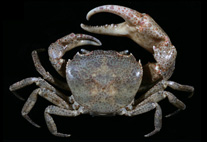Abstract
A new geoemydid turtle, Ocadia tanegashimensis (Testudines: Geoemydidae) is described on the basis of a relatively well–preserved shell from the lower middle Miocene of Tanegashima Island, Kagoshima Prefecture, southwestern Japan. This species is clearly distinguished from two congeneric species (extant O. sinensis and O. nipponica from the middle Pleistocene of eastern Japan) due to the presence of the following character states: length of the entoplastron as long as the interhyoplastral suture, the costals dovetailed with one another in outline, the third pleural overlapping only the sixth and seventh peripherals. The present study suggests that the initial intrageneric diversification of Ocadia began not later than the early Miocene in eastern Asia.

